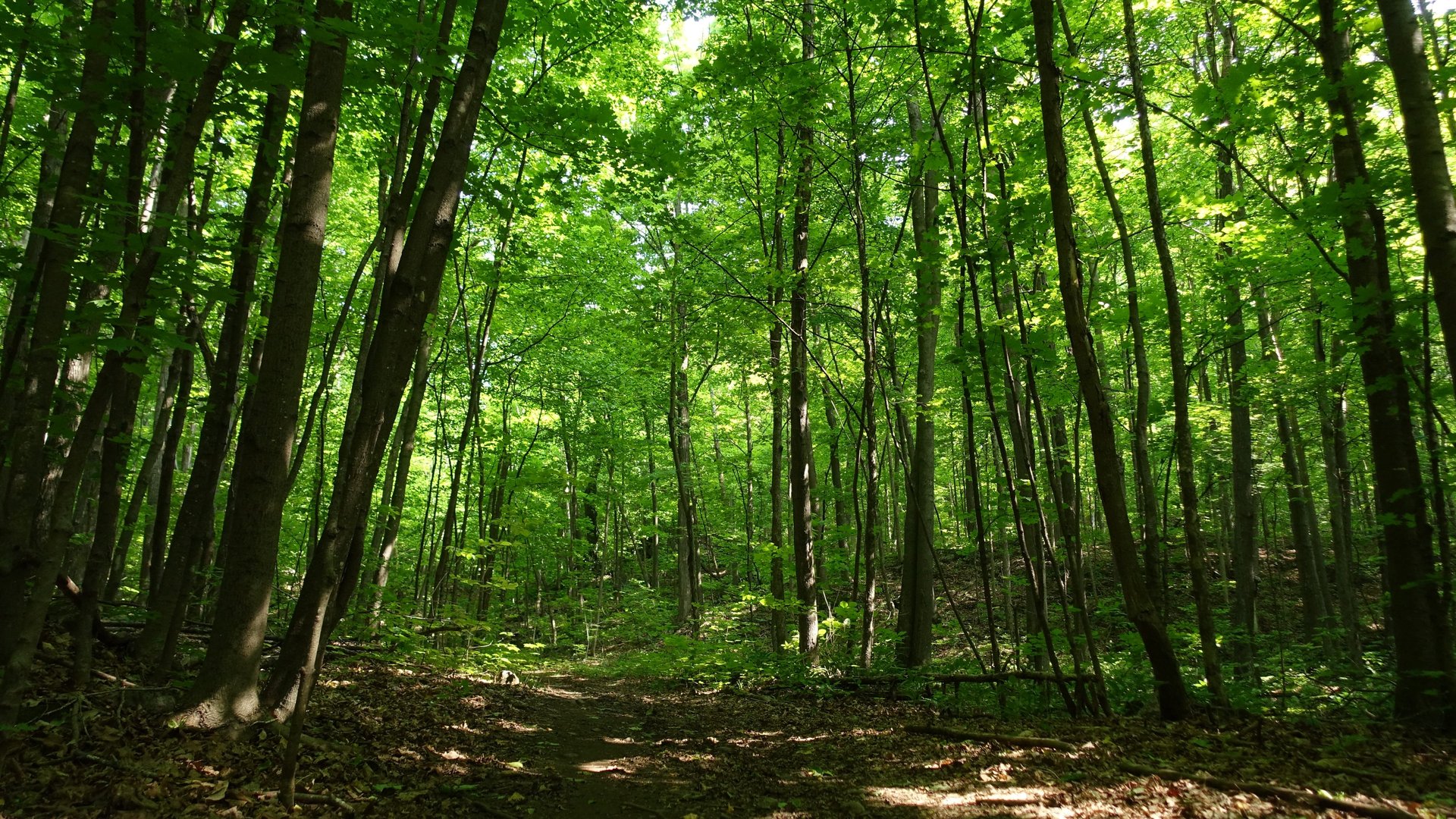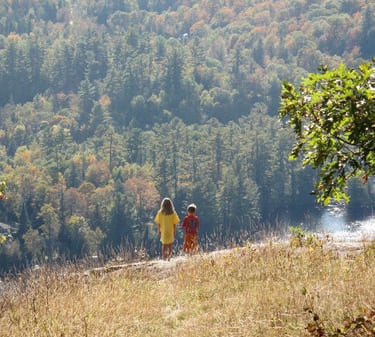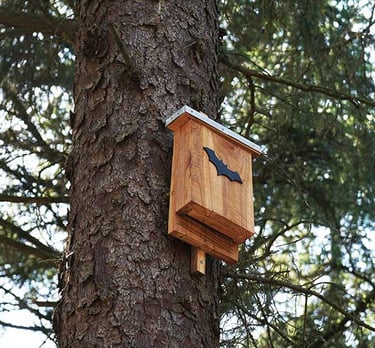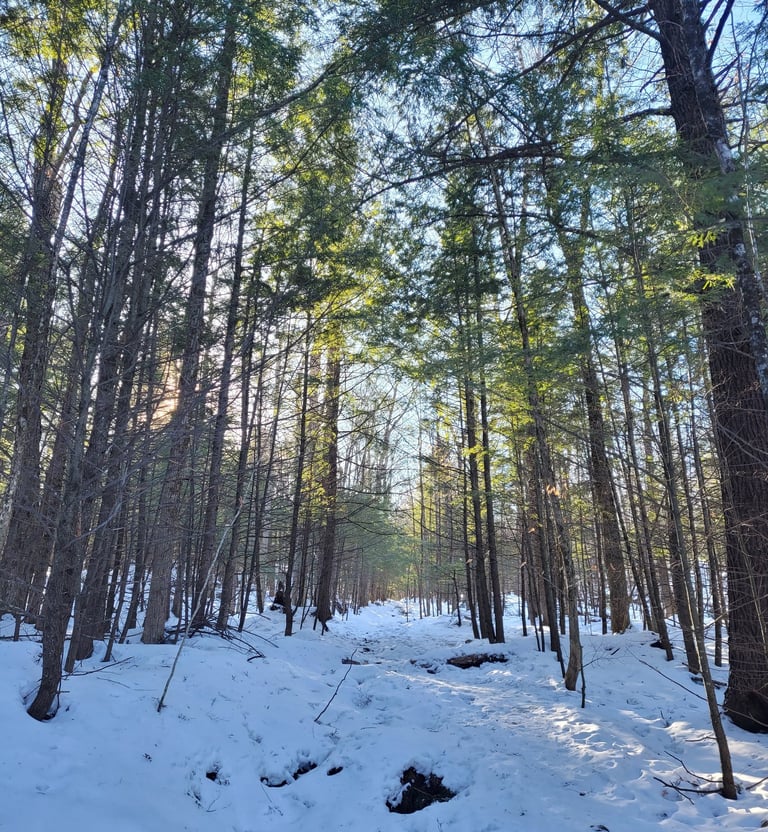
Land Trust Work
ACRE adheres to the Canadian Land Trust Standards and Practices (2019), which provide the ethical and technical guidelines for the responsible operation of land trusts in Canada. This document includes 12 standards and 91 practices and is stewarded by the Centre for Land Conservation (CLC).
ACRE is also a member of the Réseau de Milieux Naturels Protégés (RMN), which aims to protect the environment for the benefit of all by supporting and encouraging the voluntary conservation of natural environments throughout Quebec. The RMN compiles all its data on a directory to showcase the scale and involvement of each of the players in the voluntary conservation movement.
Additionally, the interactive map of the Ministère de l ‘Environnement, de la Lutte contre les changements climatiques, de la Faune et des Parcs shows protected areas in Quebec.
The website of the Alliance of Canadian Land Trusts offers numerous valuable resources designed for land trusts. The Ontario Land Trust Association's resource centre also provides a variety of templates and documents, including the Land Trust Starter Guide, which offers step-by-step instructions on how to establish a land trust. It covers essential topics such as organizational structure, governance, legal considerations, and fundraising.
ACRE's brochure outlines different options for landowners who would like to conserve their land. One of the options, Canada’s Ecological Gifts Program, allows for the donation of ecologically sensitive land and offers significant tax benefits to landowners. The website of the campaign C'est tellement naturel also described the existing conservation options.
The Brink Forest in winter
Towards protecting 30% of land by 2030
ACRE’s Director, Stephan Moresoli, has been working closely with the Municipality of Chelsea and has developed a report outlining the areas in Chelsea that need to be protected as part of the municipality's 30x30 project. In accordance with the Global Biodiversity Framework's “30x30" target, the federal government has set the goal of conserving 30 percent of Canada’s land and water by 2030, because science shows that nature needs our help in order to reverse the decline in biodiversity, better fight climate change, and maintain a strong, sustainable economy. Similar aspirations of the Province of Quebec are reflected in its 2030 Nature Plan.
While Quebec and Canada have pledged to protect 30% of their territory by 2030, only 10.2% of the Outaouais is currently protected. There is lot of work to do. Led by Kitigan Zibi Anishinàbeg, the project Kidjīmāninān, whcih means "all in the same canoe", brings together Indigenous and non-Indigenous people in the Outaouais to protect land and its rich biodiversity. This project reflects the importance of inclusive collaboration to protect ecosystems while mobilizing local and regional players. Annual regional biodiversity meetings organized by the Conseil régional de l'environnement et du développement durable de l'Outaouais (CREDDO) also foster a constructive exchange between representatives of Indigenous communities, municipalities, conservation organizations, scientists, and engaged citizens.


Ecological Connectivity
Ecological corridors are passages on land or in water, between a park and the surrounding natural environment. They enable movement of wildlife and dispersal of plant species, and facilitate seasonal migration, reproduction, feeding and adaptation to environmental change.
ACRE is focusing on land acquisitions within the ecological corridors of Gatineau Park, as identified by the National Capital Commission in 2012. The Quebec initiative on ecological connectivity is a program aimed at enhancing the conservation and connectivity of natural habitats across the province and provides steps of integrating ecological connectivity into decision-making processes.


Photo credit: Michel Leger
Pollinators and Pollinator Habitat
The Canadian Wildlife Federation (CWF) is ACRE's partner on pollinator habitat restoration projects in the Hundred Acre Wood and at Place Eco Rubin. Building upon the success of their model in Southern Ontario, CWF aims to establish a regional Community of Practice in Southern Quebec to foster peer-to-peer knowledge sharing on improved vegetation management practices. Managing Rights-of-Way for Pollinators: A Practical Guide for Managers is a useful resource that provides guidance and practical strategies for managing rights-of-way (such as utility corridors, roadsides, and railways) to support pollinator populations. The guide offers information on how to create, restore, and maintain habitats that benefit pollinators like bees, butterflies, and other insects essential for ecosystem health.


Light pollution
ACRE is collaborating with Natural Light and Soundscapes on the issue of light pollution, which is the excessive use of artificial outdoor lighting that impacts human health, wildlife behavior, and the environment. IUCN's report "The world at night : preserving natural darkness for heritage conservation and night sky appreciation" presents lessons learned drawn from case studies of dark sky places. Municipality of Chelsea's Master Plan includes Good Practices for Light Pollution Control. Parc national du Mont-Mégantic is dark sky certified. It was the first park in Quebec to receive the International Dark Sky Park designation


Bat Nurseries and Conservation
Bats are vital for healthy ecosystems. They consume large quantities of insects—providing natural pest control—and serve as indicators of environmental change. However, many bat species in Canada are threatened by habitat loss, climate change, pesticide use, and white-nose syndrome, a fungal disease that has devastated populations in eastern North America.
ACRE is currently constructing and installing bat nurseries to support local bat populations, particularly maternal colonies that are essential for species survival (ACRE Bat House Manual). The bat nurseries are being installed using evidence-based design and placement principles from two leading resources: Best Management Practices for the Use of Bat Houses in the U.S. and Canada (Holroyd et al., 2023), published by the U.S. Fish and Wildlife Service, and Bat House Design and Installation Guidelines, published by the Canadian Wildlife Federation
Well-designed and correctly placed bat houses offer safe, thermally stable roosting sites, especially in landscapes where natural tree cavities or old structures are scarce.


(438) 622-5850
(819) 921-4092
64 chemin Juniper, Chelsea, Québec, J9B 1T3


